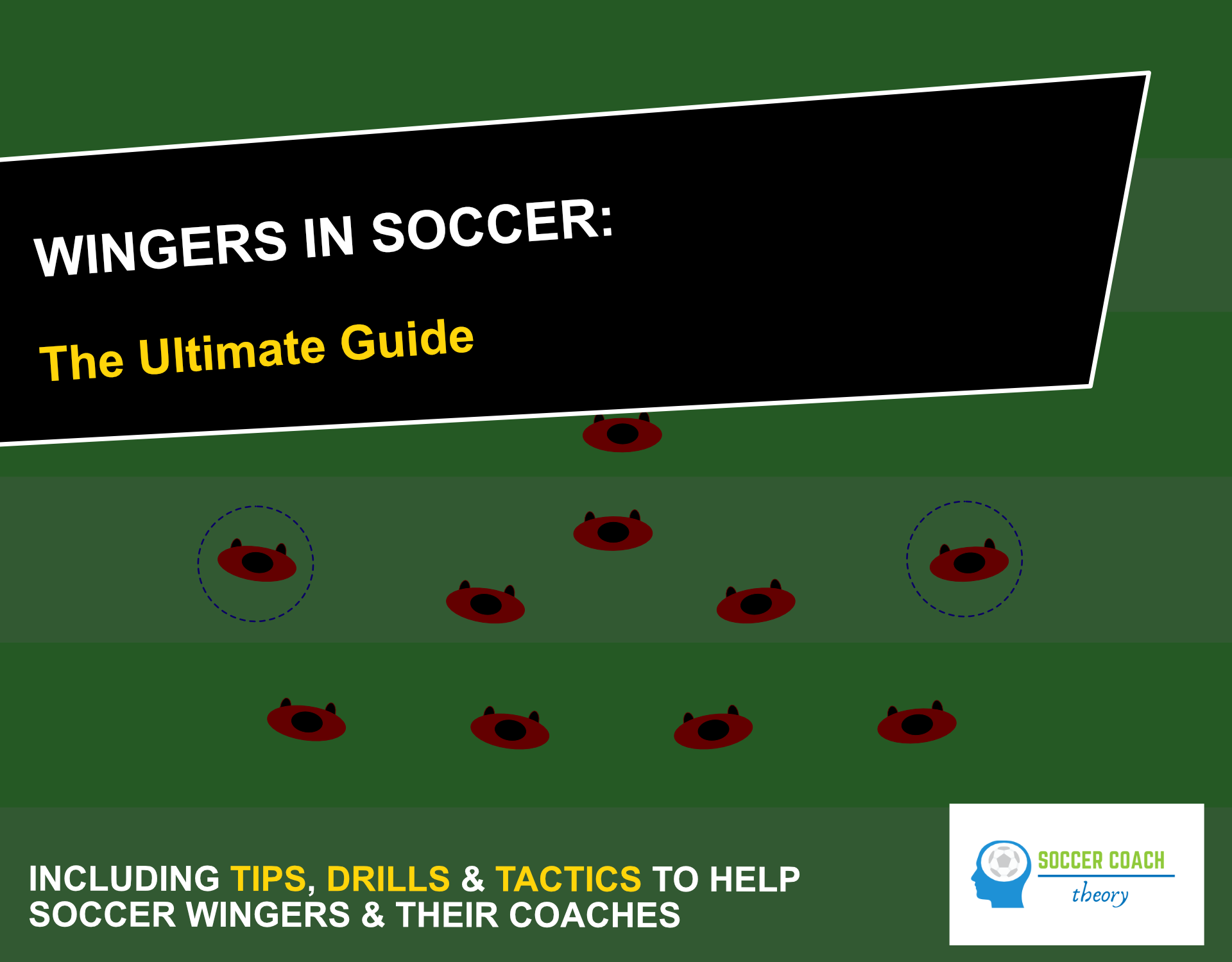Strikers in Soccer – The Ultimate Guide – Tactics, Drills and Tips
Want to be a great striker in soccer? Soccer is an exhilarating sport, and the striker (number 9) position is one of the most exciting to watch. Striker position players have a special set of skills that enable them to be successful in this highly competitive role: speed, agility, and precision ball control.
If you’ve ever dreamed of becoming a professional soccer player and playing as a striker, then you know what it takes to master this demanding skill. It requires dedication, passion, physical conditioning and mental toughness; all qualities that can lead to success at any level of competition.
For those who aspire to become elite strikers in soccer, understanding how to develop these skills is essential for achieving mastery over the role. In this article we will dive deeper into how to become a great striker by exploring techniques like positioning on the field, proper shooting form and technique, and strategies for evading defenders.
What Is A Striker In Soccer?
Oh, you want to know about the most glamorous position in soccer? The one that gets all the glory and fame – a striker. Oh yes, it’s time for some irony!
As much as we’d like to think a striker scores every goal, they are only responsible for scoring goals…not necessarily making them happen. Yes, there is more to this role than just putting the ball into the net. A soccer striker has an important job – leading their team’s attacking efforts and creating space for other players on the pitch. As such, strikers must be adept at passing quickly and accurately while having excellent spatial awareness to take advantage of any opportunity. They must also possess good finishing skills to convert chances created into actual goals.
So while being a striker may seem like an easy job from afar, it takes hard work and dedication to master the art of scoring goals consistently. It requires physical fitness, tactical knowledge and strong mental focus; qualities that make great strikers stand out from the rest!
The Role Of A Great Striker in Soccer
In soccer, the role of a striker is one that can make or break a team’s success. A good striker has an uncanny ability to score goals and put their squad in position to win matches. Strikers are not only responsible for finding the back of the net but also must possess certain other qualities such as agility, speed and intelligence on the pitch.
Strikers have a few key responsibilities: They need to be able to anticipate passes from teammates and create space for themselves so they can score with ease; they should be willing to run into channels created by midfielders; lastly, they must be confident enough to take chances when presented with opportunities. All these attributes will give them the best chance of scoring goals. The role of the striker isn’t just about putting the ball in the goal either – it requires teamwork, leadership and precise decision-making which all help contribute towards victory.
So if you want your team to succeed, having a great striker who understands his/her role and knows how to use their abilities effectively is essential. With vision, technique and determination, strikers can turn games around single-handedly – making them invaluable assets both on and off the field.
How To Make A Great Striker
Are you a soccer coach who’s been tasked with creating the next best striker? Or maybe you’re just an ambitious athlete looking to become one of the all-time greats and maybe one day play in a world cup? Either way, we’ve got some advice for you. Here are five sure-fire tips that will help make a great striker and get those goals rolling in:
- Start early – Begin building your skills as soon as possible. The sooner you begin a training program, the better off you’ll be when it comes time to compete on the pitch.
- Have a plan – Developing a personalized strategy is essential if you want to reach peak performance levels. Work out which drills and exercises work best for you and incorporate them into your practice sessions regularly.
- Practice makes perfect – This goes without saying, but repetition is key when honing any skill set or technique. Dedicate yourself to getting better every day so that by matchday, there won’t be anything standing between you and success!
- Master the basics – Before trying more complex maneuvers, master basic techniques such as passing and shooting accurately. These fundamentals can take your game to the next level if done correctly and consistently applied during play.
- Study other strikers – Observe how other successful players approach their craft and try incorporating aspects of their style into yours. How do they receive the ball? How do they link with their attacking midfielder? What do they do to put themselves in the best position to score a goal?
But most importantly, learn from their mistakes as well as successes so that you don’t end up repeating them yourself!
No matter what level of expertise you have already attained in soccer, taking these steps will undoubtedly propel your career forward faster than ever before! Whether its pre-game preparation or mastering technicalities like dribbling and trapping; following this guide will give any aspiring player an edge over even the most experienced opponents. So put these ideas into action today, and start making strides towards becoming one of the world’s greatest strikers!
Best Strikers Around The World
Although there are many great strikers in soccer, the best strikers around the world come from a select group of elite players. They have a unique combination of strength, agility and skill that sets them apart from all other players on the pitch.
In terms of raw talent, some of the most gifted center forwards can be found at top clubs across Europe and beyond. These players possess an incredible ability to score goals, create chances for their teammates and make plays that others simply cannot replicate. From Lionel Messi to Cristiano Ronaldo and Harry Kane, these are some of the best players who grace pitches today – but what about those considered the ‘best’ strikers in the world?
Every year certain stars seem to shine brighter than others; dominating tournaments with their goal-scoring prowess or leading their teams through tough games with sheer determination and grit. Whether it’s Robert Lewandowski in Germany or Kylian Mbappe in France, these are just two examples amongst many of exceptional athletes who continually demonstrate why they’re considered among the greatest strikers ever seen. Indeed, each player has something special that makes them stand out as one of the absolute finest footballers on offer – both now and into the future.
Difference Between A Striker And A Forward
Take the example of Cristiano Ronaldo, one of the best strikers around the world. He has scored over 700 goals in a career spanning 15 years and is still going strong. But what exactly makes him different from a forward?
In soccer, both strikers and forwards are attackers whose job is to score goals for their team. The difference between them lies in how they approach scoring those goals. A striker’s main focus is on getting into goal-scoring positions inside of the penalty area — typically closer to the goal line than a forward would position themselves. On the other hand, a forward will often be found outside of the penalty box with an eye towards creating chances for their teammates or making runs past defenders as well as trying to get shots off themselves.
TIP: As you watch professional matches, pay attention to where each player lines up – this can give you clues about if they’re playing more like a striker or a forward! These subtle differences can make all the difference when it comes down to finding success on the pitch.
Types Of Strikers – Striker Play
The type of striker a team employs can have a big impact on the game. An attacking player is typically the main focal point for launching an attack and creating scoring opportunities, while also having defensive responsibilities in tracking back to help protect against counter-attacks. A lone striker may be employed when teams are looking for extra security in midfield rather than trying to score goals; this allows them to focus more on defense at home or away from home. On the other hand, some teams opt for two strikers up front with one playing as a second striker who supports the main attacker by either making runs into space or helping out with defending duties.
No matter which style of play you prefer, there’s always room for flexibility and adaptation based on how your opponents set up their defenses. While employing a lone striker might seem like too much of a risk to many coaches, it can prove successful if used correctly — putting pressure on defenders and opening up spaces elsewhere. Similarly, using two strikers gives you an additional option going forward but requires careful thought about how they should move around together in order to create chances. Ultimately, what works best varies depending on the situation – so it’s important to consider all available options before settling on a strategy that fits your squad’s strengths and weaknesses.
Playing As A Striker In Soccer
Ah, being a striker in soccer. Who hasn’t dreamed of it? After all, what could be more thrilling than running down the field with only one thing on your mind: scoring goals and leading your team to victory? But what does it take to play as a striker in soccer?
Well, let’s start with the basics. To succeed as a striker, you need to have strong ball-handling skills and an eye for the goal. You must also know how to properly use your body to shield off defenders or create space for yourself. Additionally, having good striking technique is essential if you want to become one of the best strikers in world football. Striker role also involves reading plays quickly so that you can make well-timed runs into open spaces or get ahead of opponents when making crosses from wide areas.
To sum up then, playing as a striker requires physical strength, technical skill, tactical acumen and an unquenchable desire to score goals – qualities which will help bring success both on and off the pitch!
Techniques For Coaching A Striker
A Striker in soccer is like a painter on canvas, carefully crafting the perfect picture. The coach of such an artist must know how to both nurture and challenge them at the same time. Coaching a striker requires patience, dedication and understanding their unique position within soccer positions.
Through coaching, strikers possess can learn specific techniques that will help them succeed in this role. FoThe r instance, they need to be able to read the game quickly and make split second decisions about when to attack or defend. They also need to be aware of their surroundings and use angles effectively while receiving passes or dribbling with the ball. Furthermore, it’s important for coaches to emphasize proper technique when shooting as well as developing strong defensive skills that allow them to intercept balls from opponents before they reach goalkeepers.
A good striker needs to know what to do when they have possession of the ball too.
Coaches should also focus on helping their strikers develop good communication skills which are essential for successful team play; being able to give accurate instructions during games is invaluable for connecting players on the field together so they can work towards common goals. Additionally, having clear strategies regarding offensive plays and defensive maneuvers will give strikesthe best chance of finding success in key moments throughout the match. With these fundamentals firmly established, coaches can then begin teaching more advanced tactics that further enhance their player’s abilities out on the pitch.
Frequently Asked Questions about Being a Soccer Striker, and the Role of a Striker
What Are The Physical Requirements To Be A Successful Striker?
It takes considerable physical prowess and finesse to be a successful soccer striker. A study has revealed that strikers reach speeds of up to 24 kilometers per hour during the course of their match-play, making them some of the fastest players on the pitch.
To make it as a professional player, there are certain skills which should be mastered:
- Strength – Striking requires both upper body strength for shooting; and lower body power for sprinting past defenders.
- Agility – The ability to quickly change direction is crucial in order to evade opponents.
- Balance & Coordination – Good balance allows one to maintain control when dribbling or passing with either foot.
- Speed & Endurance – As mentioned earlier, speed is vital but so too is stamina over 90 minutes of play.
Achieving this level of technical mastery demands dedication and commitment from all aspiring strikers alike. It’s no surprise then that many top strikers regularly partake in specialized drills designed to hone these key attributes. To truly excel at the game, drive and determination must also come into play, allowing each individual to maximize their potential and become an unstoppable force on the field!
What Is The Impact Of A Striker On The Overall Team Performance?
As the engine of a soccer team, the striker’s position is one that requires both physical and mental prowess. They are responsible for taking on defenders, creating opportunities to score goals, and leading their team towards victory with their swift strikes and adept movements. Strikingly enough, the performance of a single player in this role can be critical to an entire team’s success or failure.
In essence, strikers play an essential part in any successful club side; they act as the catalysts for goal-scoring chances and bring life to the attack. With their speed and agility, they have the ability to open up defensive lines and create space for their teammates while also providing a real threat in front of goal. Furthermore, by exploiting weaknesses within opposing defences, they give their team more confidence going forward which leads to increased productivity throughout the pitch. Ultimately, a great striker should be able to make everyone around them better players – from midfielders all the way back to the goalkeeper.
A good striker will always put pressure on opponents’ goalkeepers through either shots at target or clever passes into dangerous areas – no matter how tight the game may seem. By doing so not only do they cause chaos amongst opposition teams but also lift morale among teammates when faced with difficult challenges during games. As such it is clear that having a quality performer up top has far reaching implications beyond just scoring goals: it influences tactical decisions, boosts team spirit and ultimately helps drive results onto your favouring table come season end!
What Is The Average Salary Of A Professional Soccer Striker?
Soccer strikers are often the most celebrated players on a team and it’s not difficult to understand why. They can make or break games with their deft footwork, powerful shots, and sheer athleticism – making them an invaluable asset for any soccer squad. But how much does all this skill fetch? What is the average salary of a professional soccer striker?
The answer varies significantly depending on the league that they play in and the country. Generally speaking, however, salaries depend upon performance bonuses tied to goals scored as well as base pay negotiated between clubs and agents. The top earners in some leagues may earn more than $7 million USD per year while those at lower levels may only receive around $1 million USD annually.
Strikers who sign with major teams like Real Madrid or Barcelona have huge contracts compared to other players because there is so much competition for their services; these marquee names can command nearly twice what another player might be offered due to their star power. As such, they’re able to reap massive rewards from lucrative sponsorship deals which come along with playing for high-profile teams.
What Is The Difference Between A Striker And A Center Forward?
A striker and a center forward may appear to be similar positions in soccer, but they are actually quite different. The average fan with an encyclopedic knowledge of the sport can tell you that much. But what is the difference between these two roles? Let’s explore this age-old question by looking at what makes each position unique.
In many ways, a striker is like a cheetah: ready to pounce on any opportunity presented to them. They look for chances to take shots from outside or inside the box, often making runs behind defenders instead of directly towards goal. A striker also relies heavily on their speed and agility when running down loose balls or trying to beat an opposing player one-on-one.
On the other hand, a center forward acts more like an elephant in comparison – big and powerful while being able to control possession well thanks to their physicality and ability to hold off defenders long enough so teammates can get into space around them. Center forwards usually play closer to goal than strikers do, often providing assists as well as scoring goals themselves. This means that center forwards need excellent vision and passing skills in order to create opportunities for others.
To sum up, it takes skillful players who understand both offensive and defensive aspects of the game to excel as either a striker or center forward in soccer. Although there are some similarities between these two roles, ultimately it comes down to individual talent combined with tactical understanding that will determine success for each position on the pitch.
How Can A Striker Improve Their Shooting Accuracy?
Being a successful striker in soccer is all about precision and accuracy. To excel in the position, it’s important to have excellent shooting skills so that you can score goals when the opportunity arises. So how can a striker improve their shooting accuracy?
The first step for any aspiring shooter is practice, practice, practice! Working on basic drills such as passing and receiving will help to get your footwork up to speed, allowing you to move around quickly when taking shots. Additionally, practicing with specific types of shots from various distances and angles will also help hone your technique. Aiming for different parts of the goal like near or far post corners requires precision and focus in order to be consistently accurate. It’s also essential to work on developing strength and power behind your shot; this will enable you to hit more powerful strikes which are harder for defenders and goalkeepers alike to stop.
Staying focused during games is equally key if you want to make an impact as a striker. It’s easy to become distracted by what’s going on around you but staying attuned to the match situation at all times allows you maximize every opportunity presented while being ready for anything that comes your way. With enough hard work and dedication, soon enough every strike of yours will have a little bit extra oomph behind it!
Final Thoughts
The role of a striker in soccer is an important one not only for their team performance but also for their own personal development. It requires excellent physical skills and accuracy with shooting to be successful. Professional strikers are highly sought after and can earn high salaries due to their contributions on the field. An interesting statistic that further conveys this importance is that top-tier strikers have been seen to score or assist in up to 50% of all goals scored by their teams.
It’s clear there are distinct differences between a center forward and a striker, though both roles require similar skill sets at some level. Striker play relies heavily on positioning and timing as well as having the technical ability with shooting accuracy. With practice, any aspiring striker can improve these areas and become more effective on the pitch. As such, it’s easy to see why striking has come so far from its humble beginnings as just another position on the football field.







